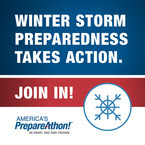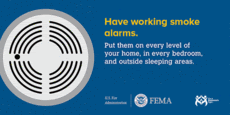In observance of National Native American Heritage Month, FEMA’s Individual and Community Preparedness Division and the Office of External Affairs, Tribal Affairs will host a webinar on Wednesday, November 30 from 2:00 to 3:00 p.m. ET focusing on disaster preparedness and resilience efforts serving tribal communities. You’ll hear several leaders who have worked to put preparedness into action by developing successful community-based initiatives and receive related program resources.
Date: Wednesday, November 30, 2016
Time: 2:00 – 3:00 p.m. Eastern Time (ET)
Featured Speakers:
- Tim Zientek, Director of Emergency Management, Potawatomi Nation
- Jeff Hansen, Director of Emergency Management, Choctaw Nation of Oklahoma
- Hailey Starr and Sarah Clark, Muckleshoot Tribal School
- Milo Booth, National Tribal Affairs Advisor, Office of External Affairs, FEMA
How to Join the Webinar:
We hope that you will be able to join us on November 30!





